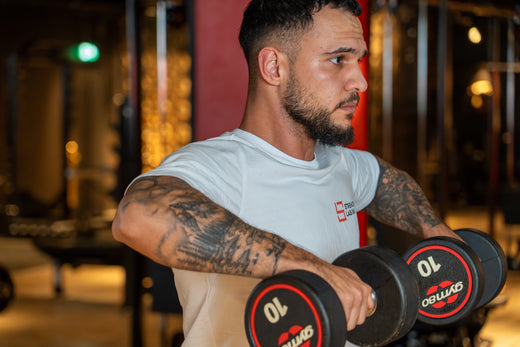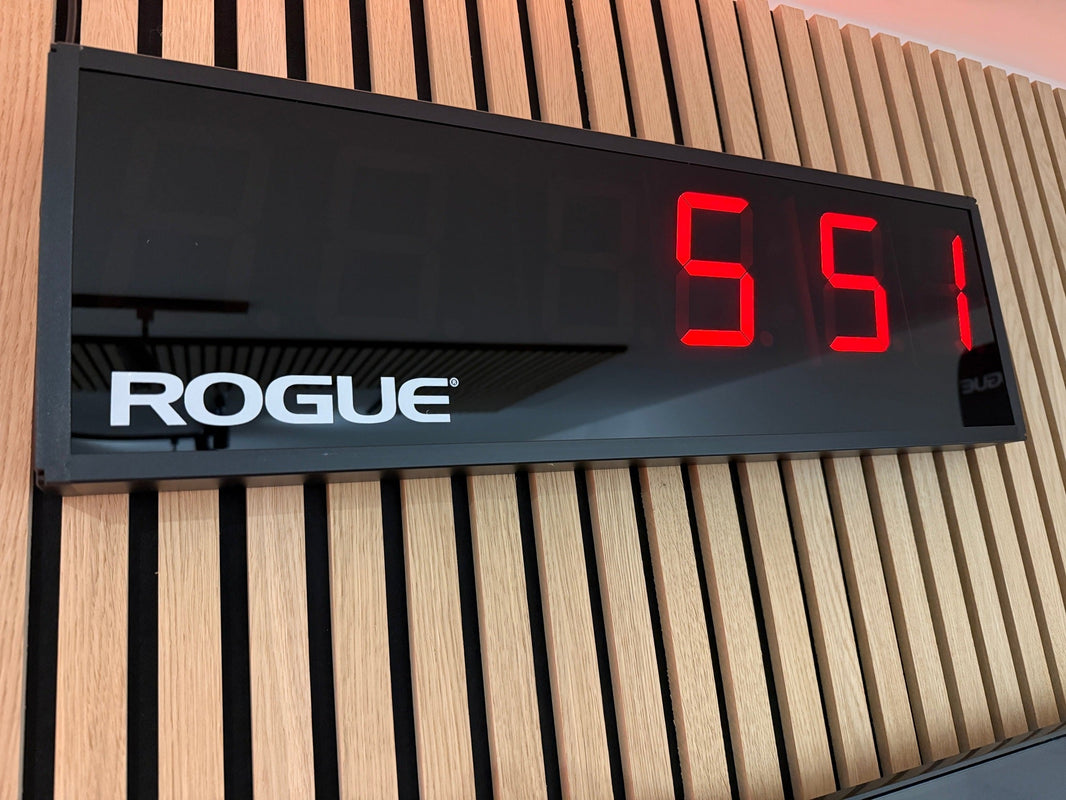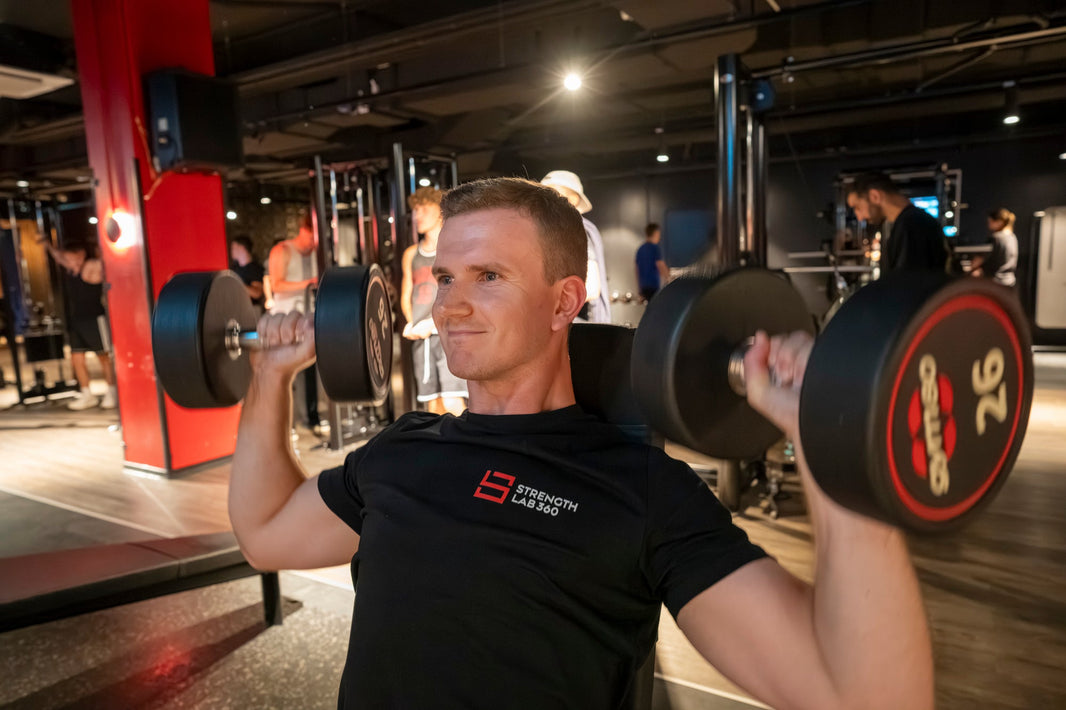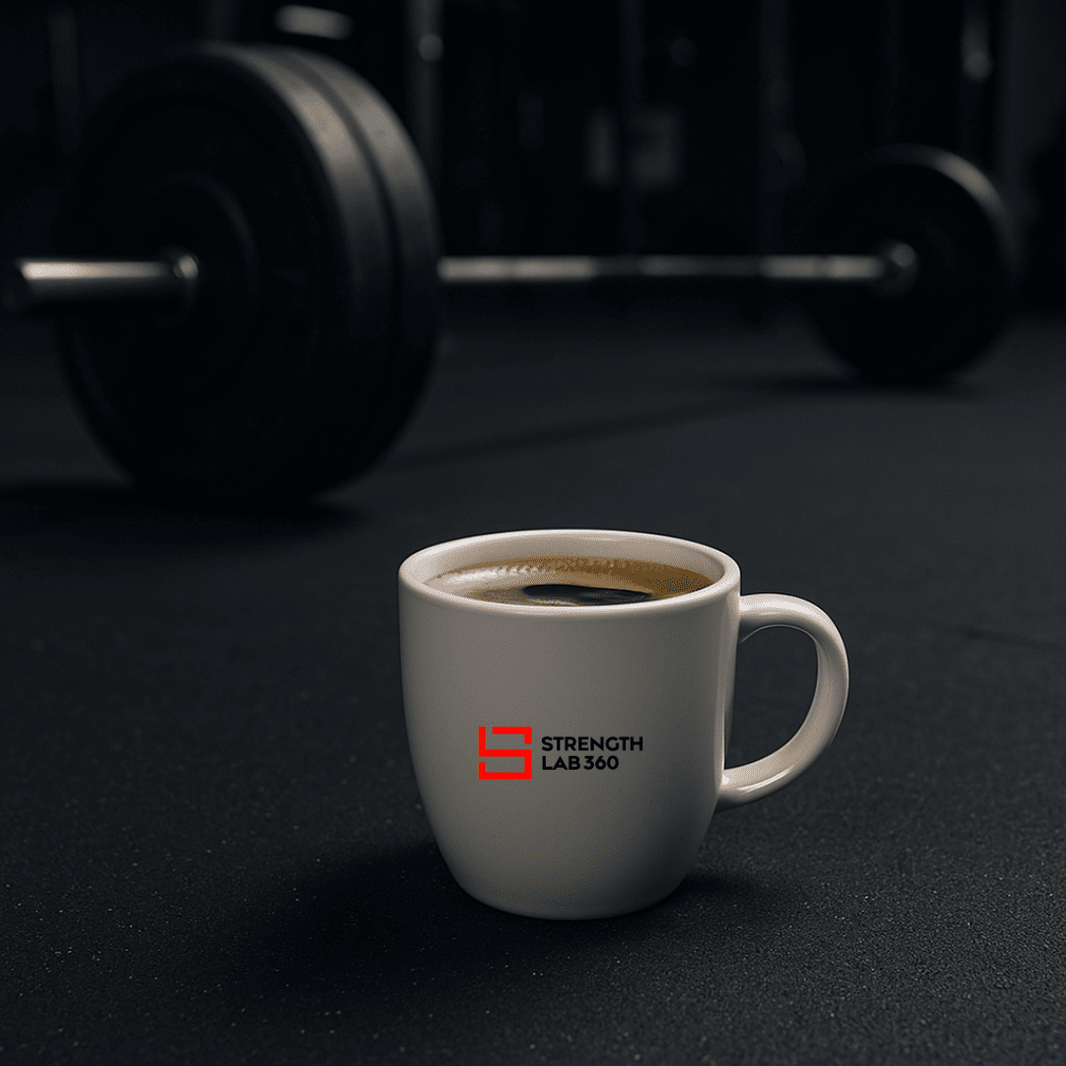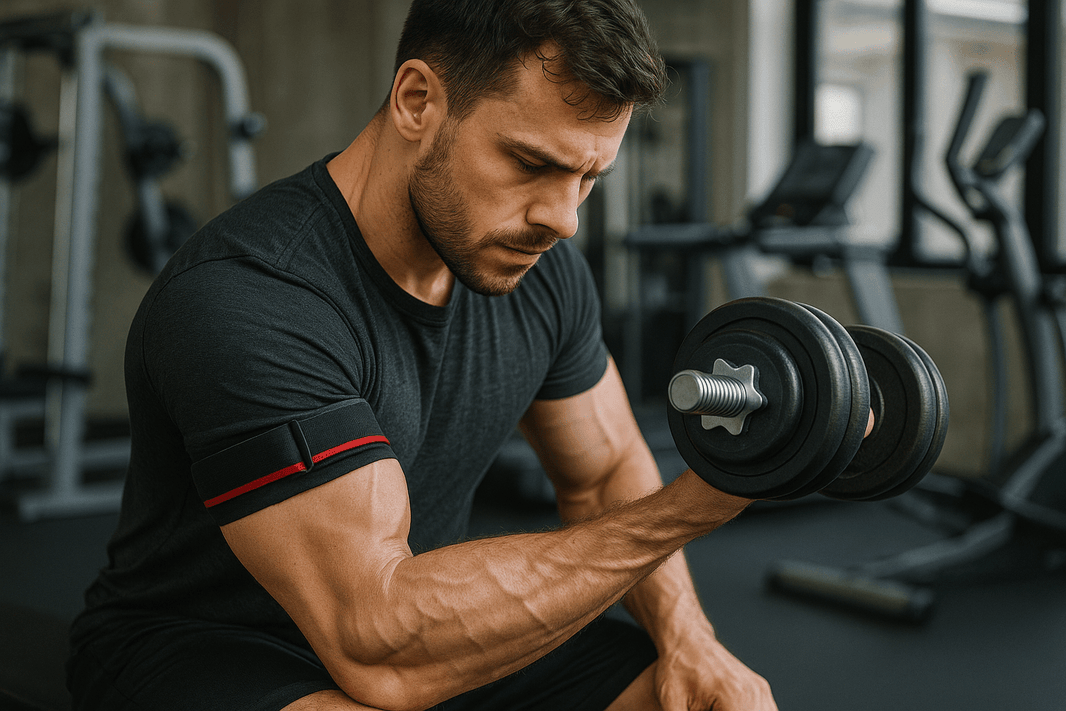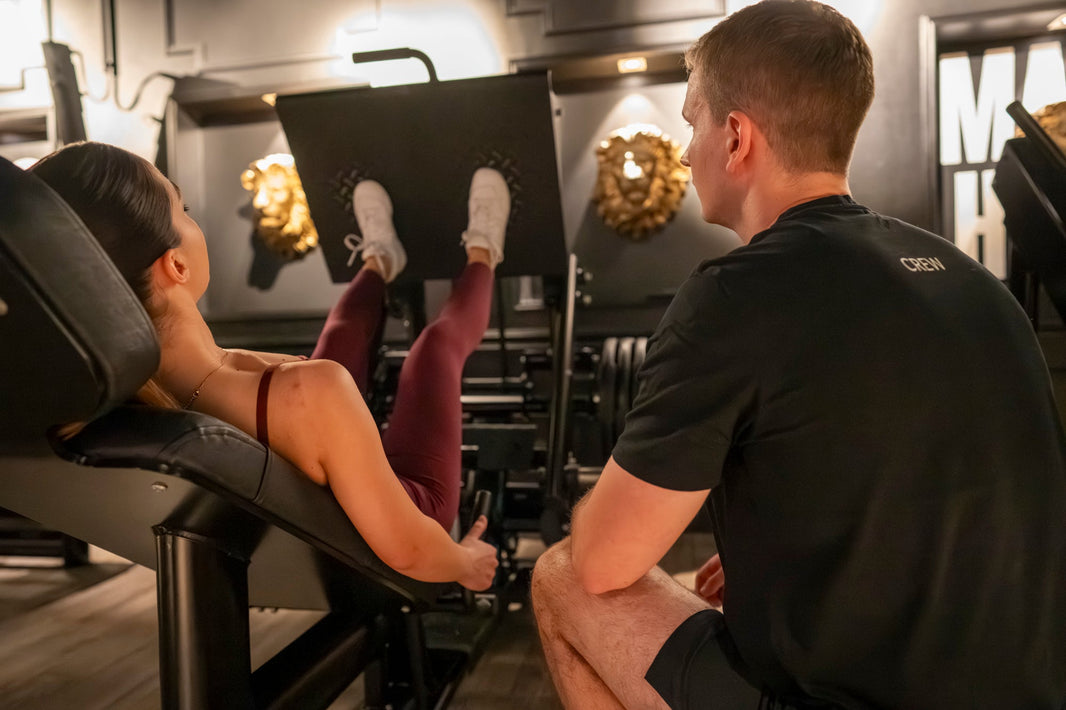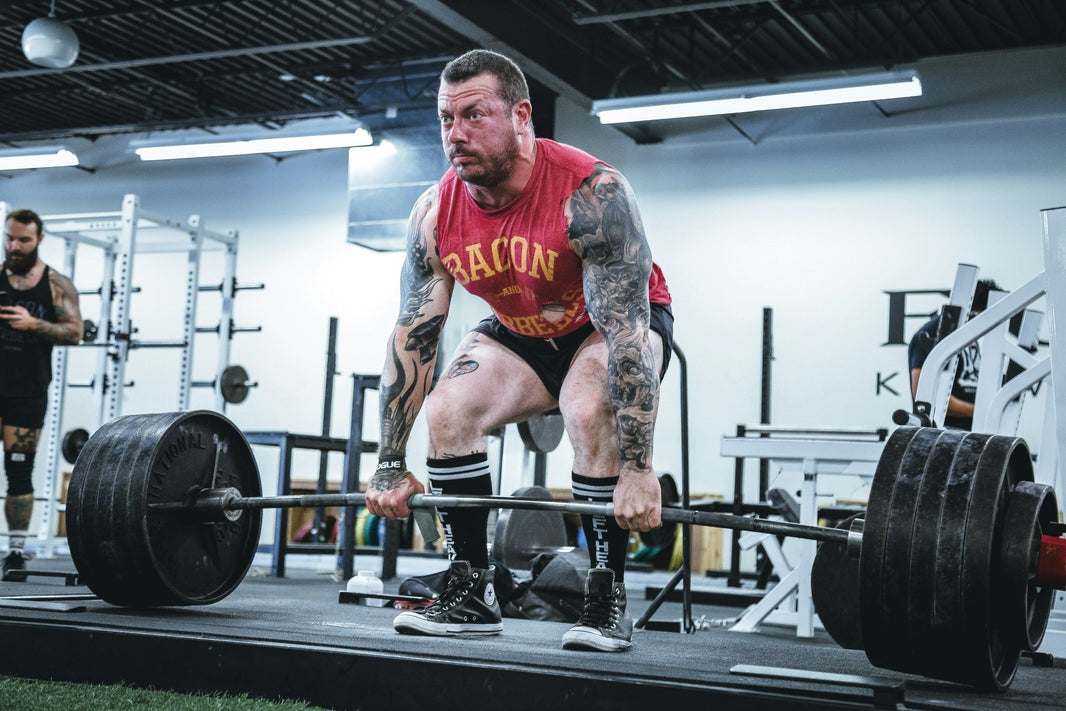Are you struggling to see growth in your shoulder workouts? This article will guide you through the best shoulder exercises designed for hypertrophy, ensuring you understand the optimal sets and reps to maximize muscle growth. We’ll delve into the anatomy of the shoulder to tailor your training for the most effective results, and provide essential nutrition and recovery strategies to support your gains. By incorporating a proper warm-up and avoiding common training errors, you’ll be equipped to overcome plateaus and achieve the robust, sculpted shoulders you’re aiming for. Engage with this content to transform your approach to shoulder training and experience tangible progress.
Key Takeaways
- Balanced shoulder workouts prevent injury and enhance both strength and physical appearance
- Proper form and progressive overload are essential for safe and effective shoulder hypertrophy
- Consistent training, nutrition, and recovery practices are key to maximizing muscle growth
- Tracking progress and adjusting workouts help overcome plateaus and ensure continuous development
- Warm-up and mobility exercises are crucial for optimal muscle activation and injury prevention
The Importance of Shoulder Strength Training
Developing the shoulders through targeted exercise not only enhances the upper body’s strength but also plays a crucial role in injury prevention. Well-developed shoulder muscles contribute significantly to the overall weight one can handle in various workouts, with dumbbell and other resistance exercises leading to muscle hypertrophy. Additionally, shoulder growth is instrumental in achieving an aesthetically pleasing physique, balancing the body’s proportions and highlighting muscular definition. The following sections will delve into the benefits of robust shoulder muscles, their impact on upper body strength, and how they contribute to an enhanced physical appearance.
Benefits of Well-Developed Shoulder Muscles
Robust deltoid muscles are the cornerstone of an effective strength training regimen, providing the necessary stability and power for a variety of arm movements. When one engages in exercises like the overhead press, the shoulders bear a significant load, which in turn fortifies the arm and upper body strength. This muscular development is not only crucial for enhancing performance in other workouts but also for daily activities that require upper body engagement.
Moreover, well-conditioned shoulder muscles serve as a safeguard against common injuries, particularly those related to the rotator cuff. Strength training that focuses on the deltoid muscle can lead to better joint stability and improved posture, which are vital for both novice and seasoned athletes. The benefits of such training are manifold and include:
- Increased lifting capacity in exercises like the overhead press
- Enhanced stability and reduced risk of shoulder injuries
- Improved physical appearance through balanced muscle proportions
Impact on Overall Upper Body Strength
Shoulder strength is fundamental to the performance of compound movements such as the bench press, where the deltoids provide critical support. Incorporating exercises like the upright row and rear delt raise into one’s routine not only targets the shoulder muscles but also fortifies the joints, enhancing the overall structural integrity of the upper body. This comprehensive approach to shoulder training ensures that individuals can handle heavier weights and engage more muscle groups effectively.
Moreover, the barbell upright row, when executed with proper form, can significantly contribute to the development of the trapezius and deltoid muscles, which are essential for a strong upper body. This development is particularly beneficial for athletes who require explosive power and endurance, as robust shoulders are pivotal in transferring force throughout the upper body. Consequently, a well-rounded shoulder workout is indispensable for those aiming to maximize their upper body strength and athletic performance.
Enhancing Aesthetic Physique Through Shoulder Growth
Shoulder growth is not just about strength; it significantly enhances one’s physical appearance. Broad, well-defined shoulders create a V-shaped torso that is highly sought after for its aesthetic appeal. This visual impact is achieved through the targeted development of the deltoids, which frame the shoulder joint and contribute to the upper body silhouette. By focusing on hypertrophy in these areas, individuals can improve the symmetry and proportion of their physique, which is particularly beneficial for bodybuilders and those aiming to sculpt a visually impressive upper body.
Moreover, the rotator cuff, a group of muscles and tendons surrounding the shoulder joint, gains stability from consistent shoulder training. This stability is crucial for maintaining joint health and can enhance the endurance and functionality of the elbow and triceps during various movements. A well-structured shoulder workout plan can lead to a more defined and capable upper body, offering both aesthetic and functional benefits:
- Increased definition and size of the deltoids for a more attractive physique
- Improved endurance and performance in activities requiring upper body strength
- Enhanced joint stability, reducing the risk of injury to the rotator cuff and elbow
Understanding Shoulder Anatomy for Effective Workouts
Grasping the complexities of shoulder anatomy is pivotal for crafting effective workouts that lead to maximum hypertrophy. The key muscles involved in shoulder movement, including the skeletal muscle groups around the scapula, are essential for exercises ranging from the fly to the squat. Understanding the function of the deltoids and the rotator cuff is crucial for optimizing performance and hand coordination. Moreover, a thorough knowledge of shoulder anatomy is instrumental in avoiding injuries. The subsequent sections will dissect these topics, offering practical insights into the anatomy that underpins shoulder strength and resilience.
Key Muscles Involved in Shoulder Movement
Effective shoulder workouts hinge on the understanding of key muscles that facilitate movement, particularly the deltoids, which are paramount for exercises like the front raise. These muscles enable a wide range of motion, from lifting objects to performing complex athletic maneuvers. The health of the shoulder joint, supported by the deltoids, is essential for the seamless integration of biceps and triceps activity, ensuring fluid arm and wrist movements during weightlifting.
When individuals engage in shoulder exercises, they often focus on the anterior, medial, and posterior deltoids, which are critical for horizontal abduction and rotation of the arm. For instance, during a front raise, the anterior deltoids work in concert with the biceps to lift the weight, while the rotator cuff muscles stabilize the wrist and shoulder joint. This synergy is vital for maintaining joint health and preventing injuries, allowing for a sustainable approach to achieving maximum hypertrophy.
Function of the Deltoids and Rotator Cuff
The deltoids are a muscle group that cap the shoulder and are integral to nearly all arm movements, playing a pivotal role in exercises such as the push press. These muscles are responsible for the strength and mass necessary to elevate the arms and handle significant weights, which is essential for both muscle growth and weight loss. The anterior deltoid allows for flexion and medial rotation, the lateral deltoid facilitates abduction, and the posterior deltoid enables extension and lateral rotation, making them key players in comprehensive shoulder workouts.
Meanwhile, the rotator cuff, comprising four smaller muscles, acts as a dynamic stabilizer for the shoulder joint, ensuring smooth and safe motion during workouts. This muscle group is crucial for maintaining shoulder health and preventing injuries, particularly when engaging in high-frequency training. The rotator cuff’s function is to secure the humerus within the shoulder socket, allowing for the fine-tuning of movements and providing the necessary support for heavy lifting exercises like the push press:
- Supraspinatus: Assists with arm lifting and is engaged at the start of a deltoid workout.
- Infraspinatus: Controls external rotation of the shoulder, vital for movements like the rear delt fly.
- Teres Minor: Works alongside the infraspinatus to rotate the arm laterally.
- Subscapularis: Facilitates internal rotation of the arm, engaged during push press and bench press exercises.
Avoiding Injuries by Knowing Your Anatomy
Understanding the intricate relationship between shoulder muscles and the pectoralis major is essential for preventing injuries during hypertrophy-focused workouts. When individuals use machines or free weights to target these areas, knowledge of proper form and muscle engagement can prevent undue strain on the shoulder joint. This awareness is further supported by adequate protein intake and nutrition, which are fundamental for muscle repair and growth, ensuring the body is well-equipped to handle the stress of training.
Moreover, incorporating foot positioning and body alignment techniques into one’s workout routine can significantly reduce the risk of shoulder injuries. By aligning the feet and engaging the core, one can create a stable base that supports the upper body during intense exercises. This approach, combined with a well-rounded nutrition plan, enables individuals to optimize their workouts for maximum hypertrophy while safeguarding the body against potential harm.
Top 5 Shoulder Exercises for Maximum Hypertrophy
For individuals dedicated to bodybuilding and seeking hypertrophy, incorporating a variety of shoulder exercises is essential. Mastering the Overhead Press lays the foundation for shoulder strength, while Lateral Raises are pivotal for building mass. Bent-Over Flyes target the often-neglected rear deltoids, and the Arnold Press offers a comprehensive approach to shoulder development. Lastly, Face Pulls are key for reinforcing stabilizer muscles, ensuring balanced growth and motion. Each exercise, when performed correctly, can minimize pain and maximize growth, engaging the humerus and surrounding muscles effectively.
Mastering the Overhead Press
The Overhead Press is a fundamental exercise for shoulder hypertrophy, engaging the deltoids through a full range of motion and promoting muscle growth. To execute this movement effectively, one must maintain a proper angle between the arms and torso, ensuring that the rotation of the shoulder joint is natural and reduces the risk of fatigue. A systematic review of training techniques suggests that incorporating progressive overload by gradually increasing the weight or repetitions is essential for continuous improvement and muscle development.
For those aiming to master the Overhead Press, attention to form is paramount to prevent injury and maximize gains. Initiating the press with a controlled rotation of the shoulders, while keeping the core engaged, helps to stabilize the body and distribute the load evenly. This technique not only enhances the effectiveness of the exercise but also ensures that the muscles are subjected to the necessary stress to trigger hypertrophy without causing undue fatigue:
| Exercise Phase | Focus Point | Benefit |
|---|---|---|
| Initiation | Shoulder Rotation | Activates deltoids, reduces injury risk |
| Execution | Core Engagement | Stabilizes body, ensures even load distribution |
| Progression | Progressive Overload | Continuous muscle growth and strength gains |
Building Mass With Lateral Raises
Lateral Raises are a quintessential exercise for targeting the medial deltoid, which is key to achieving that sought-after shoulder width and mass. Research on resistance training, accessible through databases like PubMed, underscores the importance of incorporating lateral raises into a hypertrophy-focused regimen. By using a cable machine instead of free weights, one can maintain constant tension on the deltoids, which is crucial for muscle growth and can be a beneficial addition to a physical therapy program for shoulder rehabilitation.
For optimal results, one’s diet should support the stress placed on the muscles during lateral raises, ensuring adequate protein intake for muscle repair and growth. It’s recommended to perform lateral raises with controlled movement to maximize muscle engagement and minimize the risk of injury. The following list outlines the key steps for executing lateral raises effectively:
- Stand with feet shoulder-width apart, grasping the cable machine handles or dumbbells.
- Lift the arms to the side, maintaining a slight bend in the elbows, and raise until parallel with the floor.
- Control the descent to maintain tension on the deltoids throughout the exercise.
Targeting Rear Delts With Bent-Over Flyes
Bent-Over Flyes are a critical component of shoulder hypertrophy training, specifically targeting the posterior deltoids. Studies utilizing electromyography (EMG) have shown that this exercise activates the rear shoulder muscles effectively, especially when performed to the point of muscle failure. A personal trainer might recommend the inclusion of Bent-Over Flyes to ensure balanced development across all deltoid heads, which is essential for both functional strength and a symmetrical physique.
While many athletes perform Bent-Over Flyes with free weights, incorporating a smith machine can provide added stability, allowing for a greater focus on the rear deltoids without unnecessary strain on the forearm. This exercise, executed with meticulous form, can lead to significant improvements in both the size and endurance of the shoulder muscles, making it a staple for those seeking comprehensive upper body development.
Incorporating the Arnold Press for Full Development
The Arnold Press stands out as a multifaceted exercise that targets multiple aspects of the deltoids, essential for those involved in Olympic weightlifting and seeking comprehensive shoulder development. By rotating the palms from facing the body to facing forward during the press, practitioners engage the front, medial, and rear deltoids in a single, fluid motion. This dynamic movement pattern not only promotes hypertrophy but also mirrors the functional demands of Olympic lifts, enhancing athletic performance.
Incorporating resistance bands or kettlebells can introduce variety and additional challenge to the Arnold Press, allowing for progressive resistance and increased muscle activation. For individuals supplementing their regimen with creatine, the enhanced energy production can lead to improved workout intensity and muscle endurance, making the Arnold Press a more effective tool for achieving maximum shoulder hypertrophy. The exercise’s versatility and its ability to simulate real-world lifting scenarios make it a cornerstone in any serious shoulder workout program.
Strengthening Stabilizers With Face Pulls
Face Pulls are an essential exercise for those aiming to fortify the stabilizing muscles of the rotator cuff, which are susceptible to injuries like rotator cuff tears. By utilizing a rope attachment on a cable machine, this exercise allows for a concentrated contraction of the posterior shoulder tissues, vital for maintaining shoulder health and stability. The controlled pulling motion helps to reduce body fat percentage by engaging multiple muscle groups, thereby increasing energy expenditure.
Regular inclusion of Face Pulls in a workout regimen can lead to improved posture and a decrease in shoulder pain, particularly for individuals who spend extended periods at a desk or in front of a computer. The exercise’s emphasis on external rotation and scapular retraction is crucial for counteracting the forward shoulder roll that often accompanies sedentary lifestyles. Moreover, the consistent practice of Face Pulls can enhance the integrity of shoulder tissues, contributing to overall upper body strength and function:
| Exercise Component | Targeted Area | Functional Benefit |
|---|---|---|
| Rope Attachment | Posterior Shoulder Tissues | Increases muscle engagement and stability |
| External Rotation | Rotator Cuff | Reduces risk of rotator cuff tear |
| Scapular Retraction | Upper Back Muscles | Improves posture and reduces shoulder pain |
Designing the Ultimate Shoulder Workout Routine
Creating the ultimate shoulder workout routine requires a strategic blend of compound and isolation movements to maximize hypertrophy. This section will outline the optimal balance of exercises, sets, and repetitions to stimulate growth, while considering the importance of rest periods in muscle development. It will also provide progression strategies to overcome training plateaus and offer a sample workout plan tailored for maximum gains. Emphasizing the significance of avoiding momentum and strain, the content will touch on exercises like the deadlift to engage the trapezius and improve flexibility, ensuring a comprehensive approach to shoulder training.
Balancing Compound and Isolation Movements
To foster muscular adaptation and growth, an athlete’s shoulder workout must strategically incorporate both compound and isolation movements. Compound exercises, such as the overhead press, engage multiple muscle groups and are essential for building foundational strength across the torso and enhancing overall height and posture. Isolation movements, on the other hand, like lateral raises, target specific muscles—allowing for increased volume and focused hypertrophy of the deltoids.
Understanding the balance between these two types of exercises is key to preventing plateaus and ensuring continuous development. An athlete must consider the volume of each exercise type within their routine, as excessive compound movements can lead to overtraining, while an overemphasis on isolation may not provide the stimulus needed for optimal growth. By adjusting the ratio of compound to isolation exercises, one can tailor their workout to their specific needs, ensuring a well-proportioned and powerful upper body.
Optimal Sets and Repetitions for Growth
For those seeking hypertrophy, the consensus among fitness professionals is that a moderate number of sets and repetitions maximizes muscle tension and growth. Typically, this involves 3 to 5 sets of 8 to 12 repetitions, which strikes a balance between muscle overload and recovery, stimulating the metabolism while allowing for adequate muscle repair. This range is particularly effective for engaging the complex anatomy of the shoulder, including the rotator cuff, which benefits from consistent, controlled tension.
It is essential to tailor the workout to individual capabilities and goals, ensuring that each set is challenging yet manageable to optimize calorie burn and muscle building. For instance, when targeting the deltoids and rotator cuff, one might adjust the weight to maintain form and effectiveness throughout the workout. The following list outlines a structured approach to sets and repetitions for growth:
- Begin with a warm-up set using lighter weights to prepare the shoulder anatomy for heavier loads.
- Progress to working sets, where the weight creates sufficient tension to challenge the deltoids and cuff muscles.
- Conclude with a cool-down set, focusing on form and full range of motion to enhance metabolism and recovery.
Rest Periods and Their Effect on Hypertrophy
Rest periods are a critical component of any hypertrophy-focused shoulder workout, as they allow for the replenishment of blood and nutrients to the muscles, which is essential for growth. Sports medicine experts assert that short rest intervals may enhance hormonal responses conducive to hypertrophy, yet they also increase the risk of overtraining. Therefore, it is imperative to find a balance that promotes muscle recovery without compromising the intensity required for muscle growth.
Moreover, adequate rest between sets is fundamental for maintaining core stability during exercises, which is crucial for both safety and aesthetics. A lack of rest can lead to fatigue, which in turn increases the risk of injury and diminishes the quality of muscle contractions, potentially impacting the visual results one seeks from their training. To optimize hypertrophy, one should consider the following rest period guidelines:
- For heavy compound lifts, rest for 2-3 minutes to ensure full recovery of strength.
- During isolation exercises, a shorter rest of 30-90 seconds can suffice, maintaining muscle tension and metabolic stress.
- Adjust rest periods based on personal recovery rates and the intensity of the workout session.
Progression Strategies to Overcome Plateaus
To overcome plateaus in shoulder hypertrophy, one must challenge the nervous system with new stimuli, which can be achieved through techniques such as drop sets, supersets, or eccentric loading. These methods introduce a novel challenge to the muscles, prompting adaptation and growth, and can improve posture by engaging the stabilizing muscles in different ways. It is essential to periodically alter the workout intensity or volume to prevent the body from adapting to a consistent routine, thereby fostering continued muscular development.
Another effective strategy is to incorporate periodization, where the individual systematically varies their workout’s intensity and volume over time. This approach not only stimulates the nervous system but also helps maintain optimal posture by preventing overuse injuries that can arise from constant, unchanging workout routines. By implementing these progression strategies, one can ensure that their shoulder workouts remain effective and that their path towards maximum hypertrophy continues unabated.
Sample Workout Plan for Maximum Gains
A sample workout plan for maximum hypertrophy should begin with compound movements like the Overhead Press to build foundational strength, followed by isolation exercises such as Lateral Raises to sculpt the medial deltoids. This combination ensures that the deltoids are fully engaged, promoting muscle growth and enhancing the shoulder silhouette for a more defined appearance.
For sustained gains, the workout plan must include progressive overload, where the individual gradually increases the weight or resistance to challenge the shoulder muscles consistently. This strategy not only stimulates hypertrophy but also encourages the development of a robust and balanced upper body, capable of both aesthetic appeal and functional strength.
Nutrition and Recovery Tips for Shoulder Hypertrophy
Maximizing shoulder hypertrophy extends beyond rigorous training to include strategic nutrition and recovery practices. Essential nutrients for muscle building lay the foundation for growth, while the timing and intake of protein are critical for repair and synthesis. Active recovery techniques keep muscles flexible and blood flowing, and the role of sleep in muscle growth cannot be overstated, as it is a prime time for repair and rejuvenation. Together, these elements form a comprehensive approach to enhancing shoulder development.
Essential Nutrients for Muscle Building
For those dedicated to maximizing shoulder hypertrophy, the intake of essential nutrients is non-negotiable. Protein stands at the forefront, as it is the building block for muscle repair and growth, with experts recommending a daily intake of 1.6 to 2.2 grams per kilogram of body weight for active individuals. Carbohydrates also play a vital role, providing the energy needed for intense training sessions, while healthy fats contribute to hormone regulation, which is crucial for muscle development.
Additionally, micronutrients such as vitamins D and B complex, along with minerals like magnesium and zinc, support muscle function and recovery. These nutrients aid in protein synthesis and energy metabolism, ensuring that the body’s systems are optimized for the demands of hypertrophy-focused workouts. Adequate hydration is equally important, as water is essential for nutrient transport and muscle hydration, directly impacting performance and recovery.
Importance of Protein Timing and Intake
For individuals striving to enhance shoulder hypertrophy, the timing and intake of protein are pivotal. Consuming protein shortly after a workout can significantly improve muscle repair and growth, as this is when the body’s synthesis of new muscle protein is most responsive. A strategic approach involves ingesting high-quality protein, such as whey or casein, which provides the essential amino acids necessary for optimal muscle recovery.
Moreover, consistent protein intake throughout the day supports the sustained nourishment of muscle tissues, crucial for hypertrophy. Studies suggest that dividing daily protein needs into multiple meals, each containing 20-30 grams of protein, can maximize muscle protein synthesis rates. This method ensures a steady supply of amino acids, aiding in the repair of the microtears caused by intense shoulder workouts and promoting continuous muscle growth.
Implementing Active Recovery Techniques
Active recovery techniques are essential for those pursuing shoulder hypertrophy, as they facilitate quicker recuperation and reduce the likelihood of muscle soreness. Gentle activities such as swimming or yoga can keep the blood circulating to shoulder muscles, delivering nutrients and clearing waste products that accumulate after intense workouts. This approach not only accelerates the healing process but also prepares the muscles for subsequent training sessions, optimizing the hypertrophy cycle.
Implementing low-intensity, dynamic movements on rest days can significantly enhance one’s recovery from shoulder hypertrophy training. These movements help maintain joint mobility and muscle elasticity, which are crucial for preventing stiffness and promoting longevity in strength training. By incorporating active recovery, individuals can ensure continuous progress in their hypertrophy journey without overtaxing the body’s ability to repair and grow stronger.
Role of Sleep in Muscle Growth
Optimal sleep is a cornerstone of muscle growth, particularly after shoulder hypertrophy workouts. During deep sleep cycles, the body releases growth hormone, which aids in the repair and growth of muscle tissue, making rest as crucial as the workout itself. This natural anabolic state allows the shoulder muscles to recover from the stress of exercises like the overhead press and lateral raises, setting the stage for increased muscle size and strength.
Furthermore, inadequate sleep can hinder progress by impairing recovery and reducing the body’s ability to synthesize proteins effectively. Athletes aiming for maximum shoulder hypertrophy should prioritize sleep to ensure their hard work yields the desired results. The following list outlines the key benefits of sleep in the context of muscle development:
- Enhances growth hormone release, facilitating muscle repair and growth.
- Improves protein synthesis, crucial for rebuilding shoulder muscles post-workout.
- Reduces cortisol levels, minimizing the potential for muscle tissue breakdown.
Common Mistakes to Avoid in Shoulder Training
Achieving maximum hypertrophy in shoulder workouts demands attention to detail and a strategic approach to avoid common pitfalls. Overemphasizing front deltoid exercises while neglecting the rear deltoids can lead to imbalances and potential injury. Similarly, lifting excessive weight can compromise form, undermining the effectiveness of the workout. Neglecting warm-up and mobility exercises, inconsistent training schedules, and failing to track progress are additional missteps that can stall development. This section will address these issues, offering guidance to refine one’s shoulder training regimen for optimal results.
Overemphasis on Front Delts Neglecting Rear Delts
An imbalance in shoulder training often arises when individuals disproportionately focus on front deltoid exercises, such as front raises and military presses, while neglecting the rear deltoids. This common oversight can lead to muscular imbalances, potentially causing poor posture and increasing the risk of shoulder injuries. For those aiming for maximum hypertrophy, it is essential to incorporate exercises like bent-over flyes and face pulls that specifically target the posterior deltoids, ensuring balanced development and shoulder stability.
Ignoring the rear deltoids not only hampers the quest for a fully developed, aesthetically pleasing upper body but also compromises functional strength. The rear deltoids play a critical role in movements involving pulling and rowing, which are fundamental to everyday activities and various sports. To avoid this pitfall, one must design a shoulder workout routine that equally addresses all aspects of the deltoid muscle group, fostering symmetrical growth and enhancing overall shoulder function.
Using Excessive Weight Leading to Poor Form
Lifting weights beyond one’s capacity often leads to compromised form, a critical error in shoulder training that can impede hypertrophy and elevate the risk of injury. The temptation to accelerate muscle growth by increasing weight prematurely can result in improper technique, where the intended muscle groups are not effectively engaged, and the strain is instead transferred to vulnerable joints and connective tissues. It is imperative for individuals to prioritize form over weight to ensure that shoulder workouts are both safe and productive.
Employing excessive weight can also disrupt the kinetic chain, causing other muscle groups to compensate for the lack of strength in the shoulders, which dilutes the focus on deltoid hypertrophy. This compensation often manifests as arching the back or using momentum to complete a lift, practices that not only negate the benefits of the exercise but also pose significant injury threats. To maximize shoulder development, individuals should select a weight that allows for a full range of motion and muscle activation throughout the entire set.
Ignoring Warm-Up and Mobility Exercises
Disregarding the importance of warm-up and mobility exercises is a critical mistake in shoulder training that can hinder hypertrophy and increase injury risk. A proper warm-up primes the shoulder joints, enhancing blood flow and reducing stiffness, which is essential for the heavy lifting required in hypertrophy workouts. Mobility exercises, in particular, improve the range of motion and prepare the muscles and tendons for the intense stress of weight training, ensuring that the shoulders are ready to perform optimally.
Experts in strength training emphasize that neglecting to warm up can lead to suboptimal muscle activation, which directly impacts the effectiveness of hypertrophy exercises. By incorporating dynamic stretches and light, movement-specific activities before diving into a shoulder workout, individuals can significantly reduce the potential for strains and sprains. This preparatory phase is not only crucial for safety but also sets the stage for maximum muscle engagement and growth.
Lack of Consistency in Training Schedule
A consistent training schedule is paramount for achieving maximum shoulder hypertrophy. Irregular workouts can lead to stagnation in muscle growth, as the body requires a regular stimulus to adapt and strengthen. Those dedicated to enhancing their shoulder development must adhere to a structured routine, ensuring that their muscles experience the necessary tension and recovery cycles to foster hypertrophy.
Moreover, inconsistency in training not only impedes progress but may also increase the likelihood of injury. When individuals engage in sporadic shoulder workouts, they miss the opportunity to build the endurance and resilience needed for heavy lifting, which is critical for hypertrophy. A regular training schedule allows for gradual increases in intensity, which is essential for safe and effective muscle building.
Not Tracking Progress and Adjusting Accordingly
One of the key oversights in shoulder hypertrophy training is the lack of tracking progress and making necessary adjustments. Without monitoring improvements in strength, endurance, and muscle size, individuals may find themselves stuck in a plateau, unable to reach their full potential. It’s vital to record workouts, noting the weights lifted and the number of repetitions completed, to ensure consistent challenge to the shoulder muscles for optimal growth.
Moreover, the absence of a systematic approach to evaluating progress can lead to missed opportunities for refinement. By regularly assessing performance, individuals can identify areas needing more focus or a change in strategy, such as increasing intensity or varying exercises. This ongoing process of evaluation and adjustment is crucial for continuous development and achieving maximum shoulder hypertrophy.
To simplify this process, the StrengthLab360 App offers real-time performance analytics and adaptive workout algorithms. By using our app, athletes can effortlessly track their progress and receive personalized insights for continuous improvement.
Frequently Asked Questions
Why is shoulder hypertrophy crucial in strength training?
Shoulder hypertrophy enhances overall upper body strength, improves posture, and supports joint health, which is fundamental for progressing in strength training.
How does understanding shoulder anatomy improve my workouts?
Understanding shoulder anatomy enhances workout effectiveness by guiding proper form, preventing injuries, and targeting muscle groups for balanced strength development.
What are the top exercises for shoulder muscle growth?
For optimal shoulder muscle growth, incorporate overhead presses, lateral raises, and reverse flyes into your workout routine, as these target the deltoids effectively.
How can I create an effective shoulder workout routine?
To create an effective shoulder workout, focus on exercises like overhead presses, lateral raises, and reverse flyes, ensuring you target all deltoid muscles for balanced strength and definition.
What nutrition and recovery tips aid shoulder hypertrophy?
For optimal shoulder hypertrophy, focus on a balanced diet rich in protein, adequate sleep for muscle recovery, and post-workout stretches to enhance flexibility and reduce injury risk.
Conclusion
Ultimate shoulder workouts for maximum hypertrophy are essential for building foundational strength, enhancing physical aesthetics, and preventing injuries. A balanced routine that includes both compound and isolation exercises ensures comprehensive development and functional shoulder stability. Strategic nutrition, recovery practices, and consistent training schedules underpin the success of these workouts, maximizing muscle growth and performance. By avoiding common training mistakes and focusing on proper form and progression, individuals can achieve a robust and well-proportioned upper body.
References
-
Haff, G. G., & Triplett, N. T. (Eds.). (2015). Essentials of Strength Training and Conditioning. Human Kinetics. ISBN: 978-1492501626.
